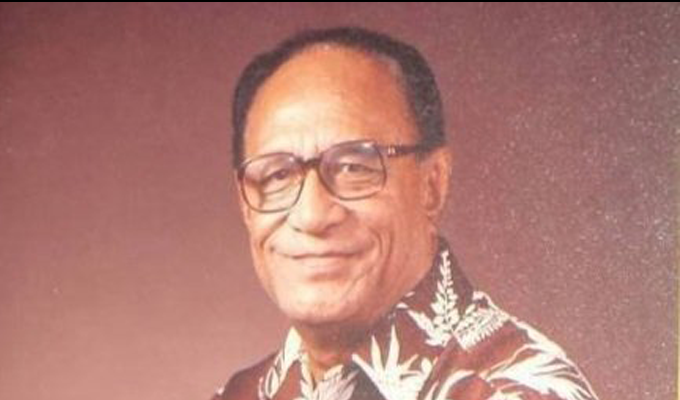A documentary about one of Tonga’s leading punakes will be screened at Hoyts cinemas in Auckland on July 14, the public holiday to mark Matariki in New Zealand.
The film will feature the story of Sir Sofele Kakala, who held a Papal knighthood bestowed by the late Pope John Paul II.

Director Neka ‘Aipolo said the film was intended to inspire the next generations of the Tongan people with a powerful story of one man’s musical and spiritual legacy.
Sir Sofele was awarded a Papal knighthood for his work writing music, including 12 masses, for the Catholic church in Tonga.
He also wrote music for the schools where he taught, for the royal Tongan family, for villages and other churches. He also founded the Kava Social Club which spread across the globe, including 15 Fa’onelua Clubs in the United States alone.
Sir Sofele was born in the village of Lapaha on Marc h 21, 1916 and died on September 30, 1991. He attended Catholic primary school and the Apifo’ou secondary school at Ma’ofanga, where he was a member of the choir and brass band and taught for many hears.
In his study of brass band music in Tonga, musicologist Dr David M. Kammerer described him as “a mature and highly respected composer, music educator, and church choirmaster.”
Kammerer described his brass band training as a key component of his artistic development, because it gave him more intensive exposure to a richer harmonic vocabulary than that experienced by the typical Tongan composer of his era.
Along with Tonga College’s Sione Tu’ifua he served as a musical collaborator with Queen Salote and adapted her hiva kakala compositions for use by their bands.
After concluding his 40-year teaching career in 1975, he was appointed by Tonga’s bishop to serve as music supervisor for the entire diocese of Tonga, while continuing to serve as music director at St. Michael’s Church.
While he was a prolific composer, Sir Sofele also contributed to the development of musical theory, especially as it applied to Tonga.
He appears to be the first Tongan professional musician and composer who wrote what he called Taimi Faka-Tonga. It is similar to the normal triplets in music theory, or the three-note pattern that fills the duration of a typical two-note pattern or minim.
The three-note pattern is a set of three crochet notes. However, he said that in the Taimi Faka-Tonga, the triplets were now a six-quaver note pattern that filled the duration of the typical two-note pattern instead of the crochet notes. Writing in his Vikia ‘A e ‘Eiki hymn for the Catholic church, he said he came across the Taimi Faka-Tonga in his music works and realised that the Taimi Faka-Tonga rhythm appeared to have not been used in any other places except Tonga only.
He said the rhythm was mostly used in the songs for the Tongan lakalaka group dance, especially in the sipa or chorus of the lakalaka song. It was largely used in the songs for the me’etu’upaki and ‘otuhaka dances.
He also contributed to Tongan music theories by making the glissando a symbol to mark the part in the ‘i’ia ‘i’ia lyrics of the Me’etu’upaki song. Glissando means the vocal has to glide from one pitch to another. In the Me’etu’upaki case, the vocal is going down after the first note for the ‘i’ia is sung with the glissando symbol written as a zigzag line placing diagonally to the right side below the first note of the ‘i’ia.
For more information
https://www.sirsofelekakala.com/


